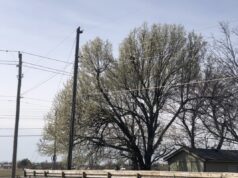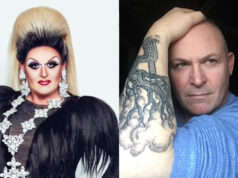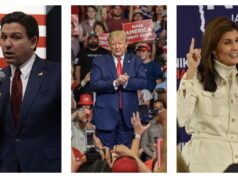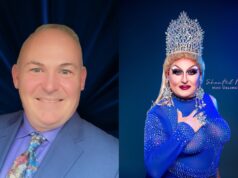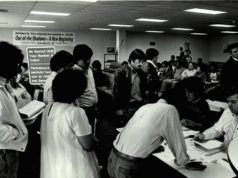
Microaggression is not a new term, but, according to some media, it is a nouveau concept invented by overly sensitive, millennial college “snowflakes” who delight in being offended by anything and everything just for the hell of it (ahem … conservative bloggers).
In short, microaggressions are intentional or unintentional verbal, nonverbal and environmental slights or insults that communicate negative racial, gendered, classist, homonegative, ableist or otherwise offensive messages to marginalized people.
Two things are important to know about microaggressions: First, we all (at some point) have been (or will be) guilty of using them. Second, they aren’t always intentionally hateful or prejudiced, but they are insidious because they are a part of our everyday language.
Some microaggressions are so commonplace we may believe them to be “normal”. Seemingly innocuous things like posing the question, “What are you?” (when asking what someone’s ethnicity is), or, “I bet you’re good at basketball?” (when asking a young tall black kids what they like to do for fun), or, “Stop acting like such a little girl,” (when talking to a man who cries or wails in pain from being hurt). Those are all examples of microaggressions, and they communicate something subtly or overtly negative, derogatory or stereotyping about a marginalized group.
With that background in mind, consider now that President Donald Trump has become the undisputed heavyweight champion of the microaggression.
Trump as a catalyst for microaggressions
“But you don’t think microaggressions are real right? It’s just minorities and women being too sensitive.”
“Donald Trump didn’t make people more hateful, he’s just saying what everyone else is thinking.”
These are just a couple of the “well-intentioned” comments I’ve heard in casual conversations with others about the role of microaggressions in marginalization.
Yes, microaggressions are real, and, no, Trump didn’t create them. Nor did he invent racial hatred or bigotry. Instead, he has coaxed those ideologies from the darkened corners of social appropriateness, sparked the fear of difference and a disdain for sensitivity, reinvigorated the resistance to diversity and eviscerated the call to empathy as if to say, “Forget tolerance. Embrace narrow-mindedness and anger.”
Who could forget the “bad hombres” statement in the final presidential debate, which was the perfect example of a microaggression on a national stage? He has given permission for our collective ugliness to strut, grow and rule in the bright light of day. As the hyper-masculine, powerful, bold, loud-mouthed, narcissistic power broker that America tried to bury under the inclusive, calm, even-tempered tenure of Barack Obama, he has made what had become taboo, passé, antiquated racism and bigotry cool again. Trump is our collective Jungian shadow, the Id-driven, grab-what-you-want-and-don’t-apologize vision of American capitalism.
Inclusivity is antithetical to Trump’s America
I am, for all intents and purposes, Public Enemy No.1 to most conservative parents who send their wide-eyed kids to the university. I teach classes with titles like “Cultural Awareness” and “Media Misogyny and Violence” and “Introduction to Women’s and Gender Studies” and “Queer Theory.” I teach them with a passionate resolve to open the minds of everyone who crosses the threshold into my class.
The backlash against the work of cultural, racial, sexual and gendered inclusivity that I and many of my colleagues around the country have been fighting for in the classroom is seen as antithetical to Trump’s America. In Trump’s America we welcome the microaggression because it’s valiant to no longer care about the impact of your hurtful words, limiting prejudices, ignorant assumptions or unbridled bigotries. In Trump’s America “being real” means being racist, sexist and homophobic. It’s a place where whining marginalized people should shut their mouths and be happy they don’t have to put their names on a registry … yet.
This could soon be an America where the cool kids are young white men with ironic Nazi undercuts and Make America Great Again tattoos in hipster fonts on their forearms, who take classes like mine as a way to subvert the liberal agenda to educate others. Where conservative social clubs in the name of the alt-right challenge Black Lives Matters protests and, at the University of Oklahoma, my very own alma-mater and place of employment, blow up huge murals of Grecian art proclaiming the beauty and honor of Caucasian pride and the necessity to preserve, honor and protect White European culture (as though it has ever been forgotten).
Yes, indeed, our shadow has arrived, and it’s walking amongst us, dressed in Urban Outfitter dark denim jeans and flannel shirts, taking college humanities classes and arguing with professors and peers about concepts like microaggressions, the unfairness of Affirmative Action laws and the tyranny of “political correctness.”
The phenomenon persists outside the classroom
But it’s not just college campuses; while sitting at lunch by myself the other day I overheard two older white gentlemen discussing how glad they were that political correctness was dead because they really wanted to go back to calling gay men “queers” and black people “colored” in public like they did in the ’60s (knowing full well I was sitting less than 10 feet away from them). It was then that it occurred to me that maybe my work would soon shift primarily to educating students about the dangers of overt public hate speech rather than innocuous, subtle microaggressions.
Whether it’s the woman wading through ironic pussy-grabbing jokes at the water cooler, the Native American defending the inappropriateness of racist sports mascots, the Muslim woman debating whether to wear Hijab to the grocery store or the Midwestern black professor navigating the hostile landscape of lunch: We’re here, we’re not all that weird, and yeah, Mr. President, we’re kind of offended.
Keep struggles in mind
As mainstream media shift from the ideological atrocities and repetitive traumas against women, Blacks, Latinxs, LGBTQ people and Muslims of the 2016 election cycle to the political business-as-usual rhetoric, it’s vital to keep the personal, everyday struggles of everyday Americans in our conscious awareness.










